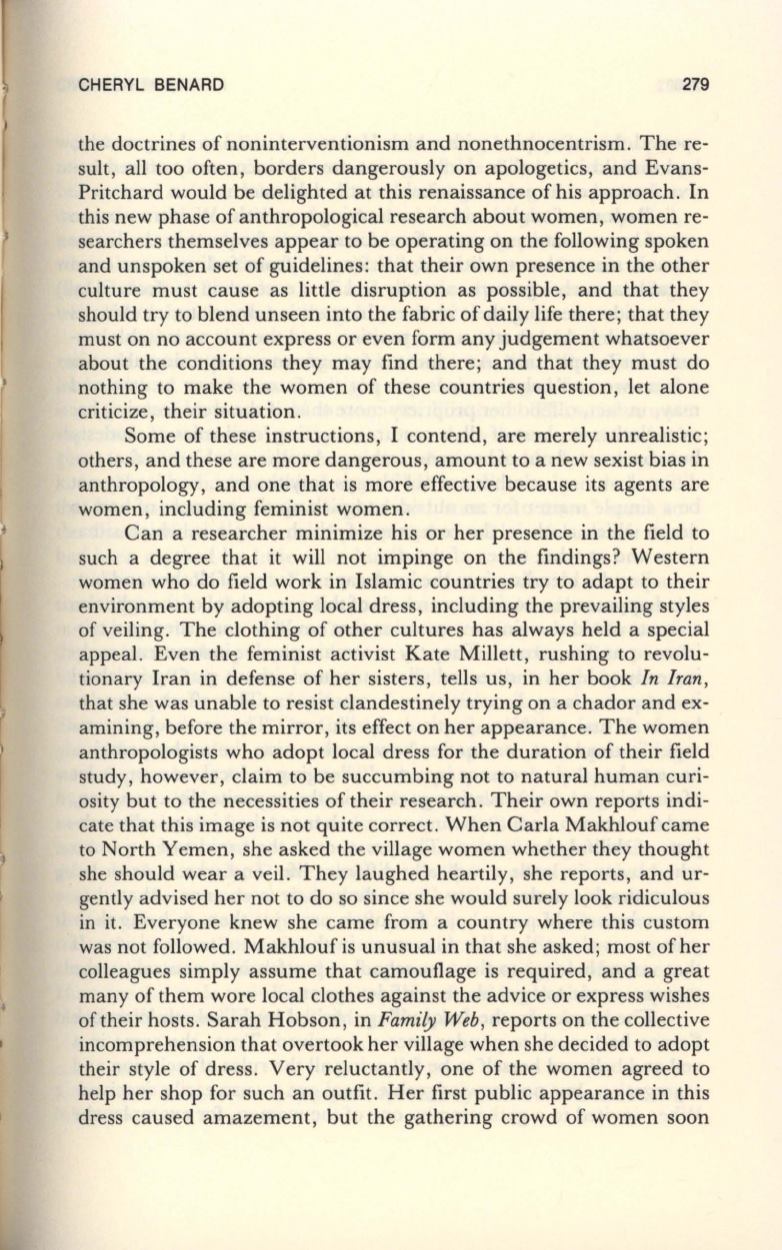
CHERYL BENARD
279
the doctrines of noninterventionism and nonethnocentrism. The re–
sult, all too often, borders dangerously on apologetics, and Evans–
Pritchard would be delighted at this renaissance of his approach. In
this new phase of anthropological research about women, women re–
searchers themselves appear to be operating on the following spoken
and unspoken set of guidelines: that their own presence in the other
culture must cause as little disruption as possible, and that they
should try to blend unseen into the fabric of daily life there; that they
must on no account express or even form any judgement whatsoever
about the conditions they may find there; and that they must do
nothing to make the women of these countries question, let alone
criticize, their situation.
Some of these instructions, I contend, are merely unrealistic;
others, and these are more dangerous, amount to a new sexist bias in
anthropology, and one that is more effective because its agents are
women , including feminist women.
Can a researcher minimize his or her presence in the field to
such a degree that it will not impinge on the findings? Western
women who do field work in Islamic countries try to adapt to their
environment by adopting local dress, including the prevailing styles
of veiling. The clothing of other cultures has always held a special
appeal. Even the feminist activist Kate Millett, rushing to revolu–
tionary Iran in defense of her sisters, tells us, in her book
In Iran,
that she was unable to resist clandestinely trying on a chador and ex–
amining, before the mirror, its effect on her appearance. The women
anthropologists who adopt local dress for the duration of their field
study, however, claim to be succumbing not to natural human curi–
osity but to the necessities of their research. Their own reports indi–
cate that this image is not quite correct. When Carla Makhlouf came
to North Yemen, she asked the village women whether they thought
she should wear a veil. They laughed heartily, she reports, and ur–
gently advised her not to do so since she would surely look ridiculous
in it. Everyone knew she came from a country where this custom
was not followed. Makhloufis unusual in that she asked; most of her
colleagues simply assume that camouflage is required, and a great
many of them wore local clothes against the advice or express wishes
of their hosts. Sarah Hobson, in
Family Web,
reports on the collective
incomprehension that overtook her village when she decided to adopt
their style of dress . Very reluctantly, one of the women agreed to
help her shop for such an outfit. Her first public appearance in this
dress caused amazement, but the gathering crowd of women soon


